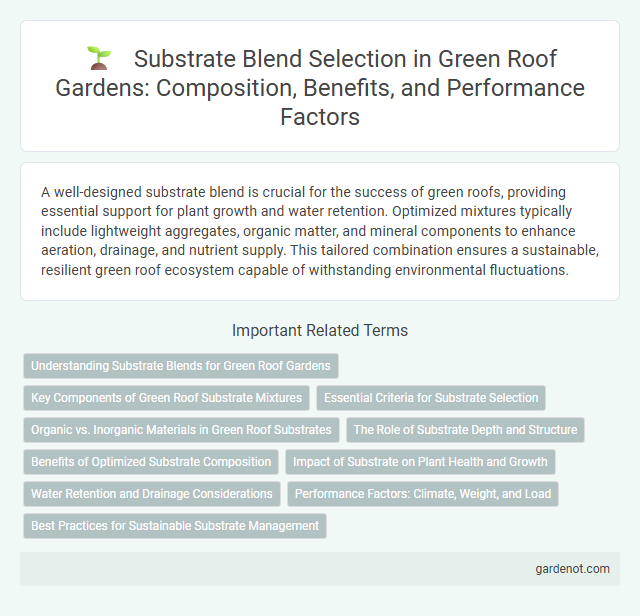A well-designed substrate blend is crucial for the success of green roofs, providing essential support for plant growth and water retention. Optimized mixtures typically include lightweight aggregates, organic matter, and mineral components to enhance aeration, drainage, and nutrient supply. This tailored combination ensures a sustainable, resilient green roof ecosystem capable of withstanding environmental fluctuations.
Understanding Substrate Blends for Green Roof Gardens
A well-formulated substrate blend is essential for green roof gardens, balancing lightweight materials like expanded shale or clay with organic matter to enhance water retention and drainage. Optimal blends typically consist of 70% mineral components and 30% organic content, supporting healthy root development while minimizing structural load. Understanding the specific plant species and local climate conditions informs the precise composition for maximizing green roof performance and longevity.
Key Components of Green Roof Substrate Mixtures
Green roof substrate mixtures commonly consist of lightweight aggregates, organic matter, and mineral components to optimize water retention, drainage, and root support. Key components include expanded clay, perlite, and compost, which balance aeration with nutrient availability for plant health. Incorporating basalt or pumice enhances structural stability and promotes long-term durability of the green roof system.
Essential Criteria for Substrate Selection
Selecting a substrate blend for green roofs requires prioritizing lightweight materials with high porosity to ensure optimal drainage and root aeration. Essential criteria include nutrient retention capacity, pH stability, and structural integrity to support plant growth while preventing compaction. The blend typically combines inorganic components like expanded clay or pumice with organic matter to balance water retention and promote healthy vegetation establishment.
Organic vs. Inorganic Materials in Green Roof Substrates
Green roof substrates require a balanced blend of organic and inorganic materials to optimize plant growth and structural stability. Organic components like compost and peat provide essential nutrients and water retention, enhancing root development and microbial activity. Inorganic materials such as expanded clay, perlite, or gravel improve drainage, aeration, and prevent substrate compaction for long-term performance.
The Role of Substrate Depth and Structure
Substrate depth and structure critically influence green roof performance by affecting water retention, root development, and thermal insulation. Deeper substrates typically enhance plant diversity and drought resilience, while optimized blends balance porosity and nutrient availability to support healthy vegetation growth. Properly structured substrates improve stormwater management by maximizing infiltration and reducing runoff.
Benefits of Optimized Substrate Composition
Optimized substrate composition in green roofs enhances water retention, promoting plant health while reducing runoff and stormwater management costs. A balanced blend supports root aeration and nutrient availability, fostering robust vegetation growth and extending roof lifespan. Improved substrate structure also increases thermal insulation, contributing to energy efficiency and urban heat island mitigation.
Impact of Substrate on Plant Health and Growth
A well-formulated substrate blend directly influences plant health and growth on green roofs by optimizing water retention, aeration, and nutrient availability. Substrates rich in organic matter and balanced mineral content promote root development and stress resilience, crucial for thriving vegetation in rooftop environments. Selecting the appropriate substrate composition enhances plant vitality and longevity, contributing to the overall sustainability of green roof ecosystems.
Water Retention and Drainage Considerations
A well-designed green roof substrate blend balances water retention and drainage to support plant health and structural integrity. Incorporating lightweight organic materials like compost enhances moisture retention, while inorganic components such as expanded clay or perlite improve aeration and prevent waterlogging. Optimal substrate porosity ensures efficient water flow, reducing the risk of root rot and structural stress from excess weight.
Performance Factors: Climate, Weight, and Load
A well-formulated substrate blend for green roofs balances water retention, aeration, and nutrient supply to optimize plant growth under varying climate conditions such as temperature fluctuations and precipitation levels. Lightweight materials like expanded clay or perlite reduce structural load, ensuring compliance with building weight limits while maintaining substrate stability. Proper substrate composition enhances drainage and root support, influencing the overall performance of the green roof system in terms of durability and ecosystem benefits.
Best Practices for Sustainable Substrate Management
Choosing a well-balanced substrate blend rich in organic matter and mineral components enhances water retention and nutrient availability for green roofs. Incorporating lightweight aggregates like pumice or expanded clay improves drainage and prevents compaction, promoting healthy root growth. Regular monitoring and replenishment of substrate nutrients ensure sustained plant vitality and extend the lifespan of the green roof system.
Substrate blend Infographic

 gardenot.com
gardenot.com